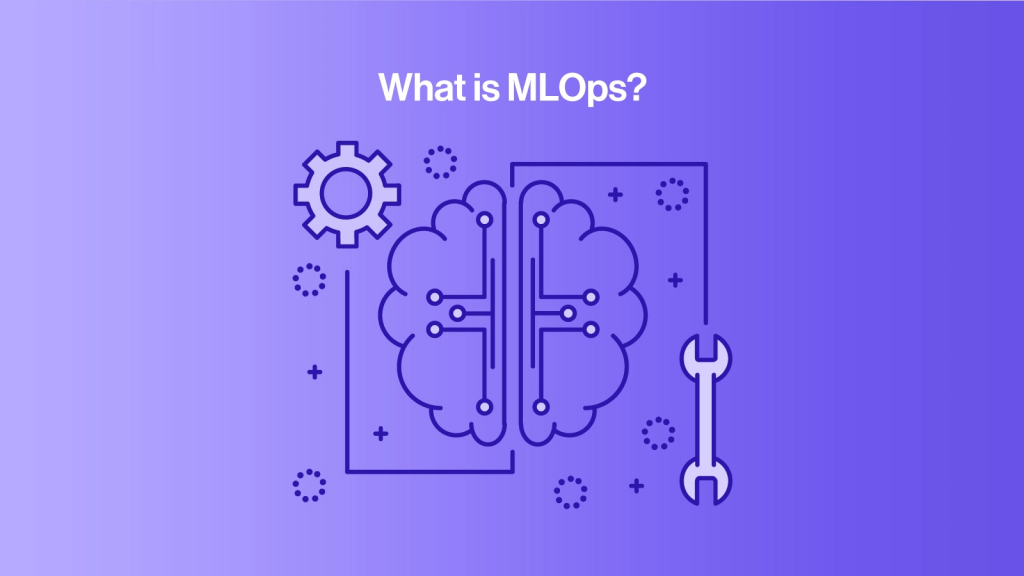
MLOps (Machine Learning Operations) is a set of practices and principles that combines machine learning (ML) with DevOps and data engineering practices to streamline the deployment, monitoring, and management of machine learning models in production environments. MLOps aims to bridge the gap between data science teams that develop models and IT/DevOps teams responsible for deploying and maintaining applications, ensuring that ML models are delivered reliably and effectively to end-users.
The goal of MLOps is to establish a systematic and collaborative approach to managing the entire machine learning lifecycle, from data preparation and model development to deployment, monitoring, and continuous improvement.
Key Aspects of MLOps:
- Collaboration: MLOps emphasizes collaboration between data scientists, machine learning engineers, data engineers, and IT/DevOps teams to ensure seamless integration of ML models into production environments.
- Automation: Similar to DevOps, automation is a key principle of MLOps. It involves automating the process of model deployment, testing, monitoring, and scaling.
- Version Control: MLOps incorporates version control for both code and models, ensuring traceability, reproducibility, and the ability to roll back to previous versions.
- Continuous Integration and Continuous Deployment (CI/CD): MLOps applies CI/CD practices to machine learning workflows, enabling frequent model updates and rapid deployment.
- Model Monitoring and Feedback: MLOps includes monitoring and feedback mechanisms to track the performance of deployed models, detect anomalies, and initiate corrective actions.
- Governance and Compliance: MLOps ensures that models adhere to regulatory and compliance standards, maintaining data privacy and security.
Why Do We Need MLOps?
- Efficient Model Deployment: MLOps streamlines the process of deploying machine learning models, reducing the time and effort required to move models from development to production.
- Reliability and Scalability: MLOps practices ensure that models perform reliably and can be easily scaled to handle increased workloads.
- Automation: MLOps automates routine tasks such as model deployment, testing, monitoring, and scaling, reducing the potential for manual errors.
- Collaboration: MLOps encourages collaboration between data science and IT/DevOps teams, fostering better communication and understanding of requirements.
- Version Control and Reproducibility: MLOps enforces version control for models and code, making it easier to reproduce results, troubleshoot issues, and roll back to previous versions if necessary.
- Real-time Monitoring: MLOps provides real-time monitoring of model performance, allowing for prompt identification of issues and timely updates.
- Risk Reduction: MLOps practices help mitigate risks associated with model failures or performance degradation in production environments.
- Model Governance: MLOps ensures that deployed models adhere to governance and compliance standards, including data privacy and ethical considerations.
- Faster Innovation: By enabling more efficient deployment and monitoring of models, MLOps accelerates the pace of innovation in machine learning projects.
- Data-Driven Decision-Making: MLOps facilitates data-driven decision-making by ensuring that accurate and up-to-date models are available for use.
- Cost Efficiency: MLOps optimizes resource usage and scaling, leading to cost-efficient operations.
MLOps addresses the challenges of deploying and managing machine learning models in production environments. It ensures that models are delivered reliably, efficiently, and in compliance with industry standards, enabling organizations to fully realize the benefits of their machine learning initiatives.
What is the Advantage of MlOps?
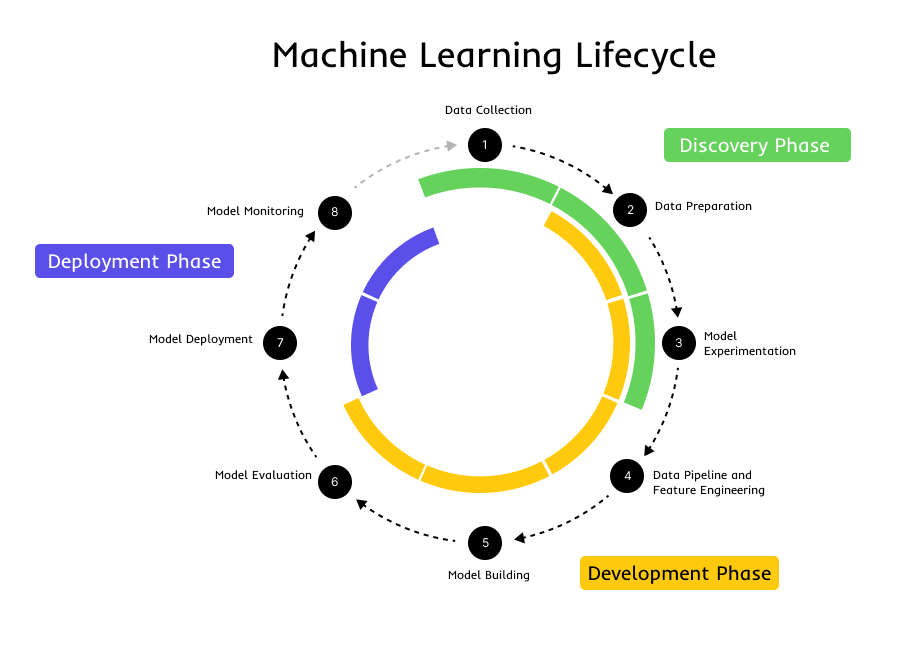
- Efficient Model Deployment: MLOps streamlines the process of deploying machine learning models, reducing the time and effort required to move models from development to production.
- Reliability and Scalability: MLOps practices ensure that models perform reliably and can be easily scaled to handle increased workloads.
- Automation: MLOps automates routine tasks such as model deployment, testing, monitoring, and scaling, reducing the potential for manual errors.
- Collaboration: MLOps encourages collaboration between data science and IT/DevOps teams, fostering better communication and understanding of requirements.
- Version Control and Reproducibility: MLOps enforces version control for models and code, making it easier to reproduce results, troubleshoot issues, and roll back to previous versions if necessary.
- Real-time Monitoring: MLOps provides real-time monitoring of model performance, allowing for prompt identification of issues and timely updates.
- Risk Reduction: MLOps practices help mitigate risks associated with model failures or performance degradation in production environments.
- Model Governance: MLOps ensures that deployed models adhere to governance and compliance standards, including data privacy and ethical considerations.
- Faster Innovation: By enabling more efficient deployment and monitoring of models, MLOps accelerates the pace of innovation in machine learning projects.
- Data-Driven Decision-Making: MLOps facilitates data-driven decision-making by ensuring that accurate and up-to-date models are available for use.
- Cost Efficiency: MLOps optimizes resource usage and scaling, leading to cost-efficient operations.
What is the feature of MlOps?
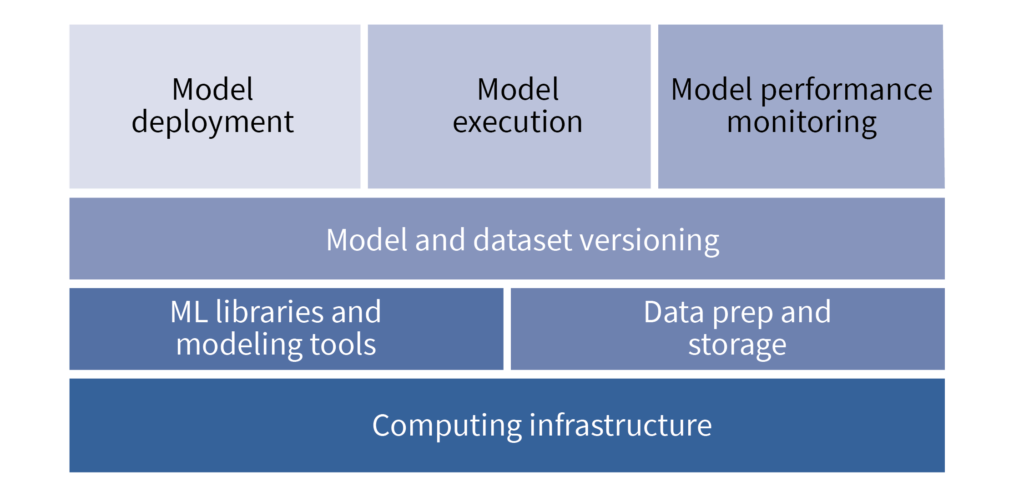
- Collaboration: MLOps fosters collaboration between data science, machine learning, and IT/DevOps teams, ensuring seamless integration of models into production.
- Automation: Automation is a core feature of MLOps, enabling automated deployment, testing, monitoring, and scaling of machine learning models.
- Version Control: MLOps enforces version control for both models and code, maintaining a history of changes and facilitating reproducibility.
- Continuous Integration and Continuous Deployment (CI/CD): MLOps applies CI/CD practices to machine learning workflows, allowing for frequent updates and rapid deployment.
- Model Monitoring and Feedback: MLOps includes monitoring tools to track model performance, detect anomalies, and provide feedback for continuous improvement.
- Governance and Compliance: MLOps ensures that models adhere to regulatory and compliance standards, maintaining data privacy and ethical considerations.
- Scalability: MLOps ensures that models can be easily scaled to handle varying workloads and demand.
- Risk Management: MLOps helps in mitigating risks associated with model failures or performance degradation by ensuring thorough testing and monitoring.
- Real-time Insights: MLOps provides real-time insights into model performance, facilitating quick responses to issues.
- Efficiency Enhancement: MLOps automates routine tasks, optimizing resource utilization and improving efficiency.
- Model Deployment Flexibility: MLOps supports deploying models on various platforms, including cloud environments and edge devices.
- Collaborative Testing: MLOps allows teams to collaboratively test and validate models before deployment.
- Model Reusability: MLOps enables the reuse of existing models across different projects and applications.
- Feedback Loop: MLOps establishes a feedback loop between data science and IT/DevOps teams, facilitating continuous improvement.
MLOps enhances the management and deployment of machine learning models, leading to more reliable, scalable, and efficient operations. It bridges the gap between data science and IT/DevOps, ensuring that models are deployed, monitored, and maintained effectively in production environments.
What is the Top 10 Use cases of MlOps?
Here are some of the top 10 use cases of MLOps:
- Fraud detection: MLOps can be used to detect fraudulent transactions by analyzing data from multiple sources, such as customer behavior, financial transactions, and social media activity.
- Risk management: MLOps can be used to assess and manage risk by analyzing data from multiple sources, such as financial markets, customer behavior, and supply chains.
- Recommendation engines: MLOps can be used to recommend products or services to customers by analyzing their past behavior and preferences.
- Personalization: MLOps can be used to personalize the user experience by tailoring content, products, and services to each individual’s needs and preferences.
- Predictive maintenance: MLOps can be used to predict when equipment is likely to fail so that maintenance can be scheduled before it causes an outage.
- Logistics: MLOps can be used to optimize logistics operations by routing shipments, managing inventory, and forecasting demand.
- Healthcare: MLOps can be used to improve healthcare outcomes by analyzing patient data to identify disease risks, personalize treatment plans, and improve clinical decision-making.
- Manufacturing: MLOps can be used to improve manufacturing operations by optimizing production processes, reducing waste, and increasing efficiency.
- Financial services: MLOps can be used to improve financial services by detecting fraud, managing risk, and optimizing investment portfolios.
- Telecom: MLOps can be used to improve telecom operations by optimizing network performance, reducing costs, and improving customer service.
The following are the steps involved in implementing MLOps:
- Express your goals: What do you want to accomplish with MLOps? Do you want to improve fraud detection, risk management, or personalization?
- Gather your data: You need to collect data from multiple sources in order to train your ML models. This data can include customer behavior, financial transactions, and social media activity.
- Build your models: You need to build models that can learn from the data you have collected. These models will be used to detect fraud, manage risk, or personalize the user experience.
- Deploy your models: Once you have built your models, you need to deploy them into production. This will allow them to start monitoring your IT environment and taking action to prevent problems.
- Monitor your models: You need to monitor your models to make sure they are working properly. You should also tune your models over time to improve their accuracy.
- Iterate and improve: MLOps is an iterative process. You will need to iterate over the steps above to continuously improve your results.
MLOps is a complex and challenging undertaking, but it can be very rewarding. By following these steps, you can implement MLOps and achieve your goals.
Some of the additional tips for implementing MLOps:
- Start with a pilot project: Don’t try to implement MLOps across your entire organization all at once. Start with a pilot project to test the waters and see how it works.
- Get buy-in from senior management: MLOps requires a change in culture and mindset. You need to get buy-in from senior management to make it successful.
- Choose the right tools: There are many different MLOps tools available. Select the tools that are true to your needs and that will aid you in achieving your goals.
- Educate your team: Your team needs to understand the benefits of MLOps and how it will affect their work. Provide them with training and resources so that they can be successful.
- Measure your results: MLOps is all about results. Make sure that you are measuring your results so that you can track your progress and make necessary adjustments.
- Be patient: MLOps is a journey, not a destination. It takes time to implement and get the most out of it. Be persistent and patient, and you will eventually attain success.
How to Get certified in MlOps?
- DevOpsSchool.com
- scmGalaxy.com
- BestDevOps.com
- Cotocus.com
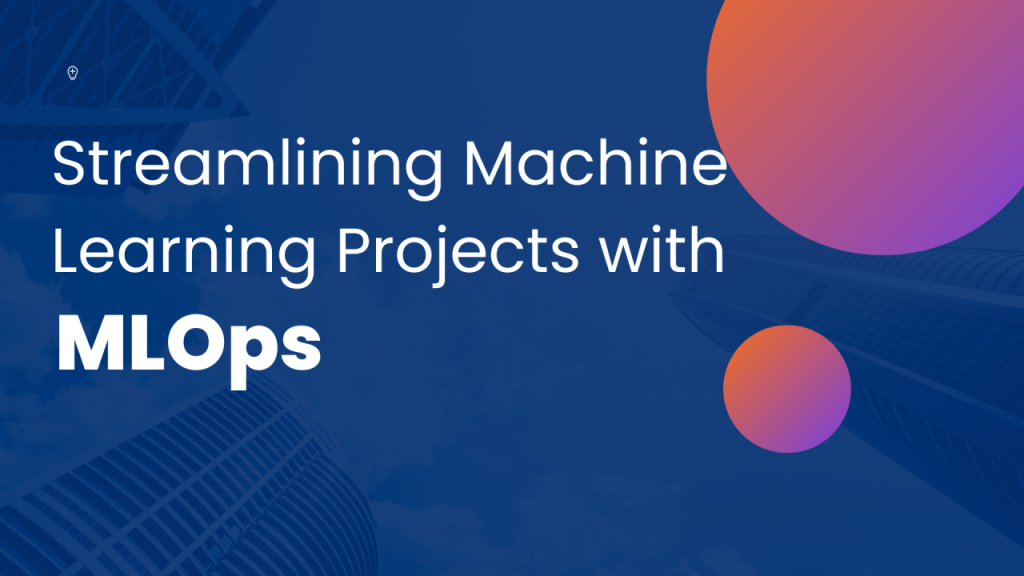
There are a few ways to get certified in MLOps. Here are some of the options:
- Take a course: There are many online and in-person courses available that teach the fundamentals of MLOps. These courses can help you learn the key concepts and principles of MLOps, as well as the tools and technologies used in this field.
- Get certified by a vendor: There are a number of vendors that offer MLOps certifications. These certifications can be a good way to demonstrate your skills and knowledge to potential employers.
- Contribute to an open source project: There are many open source projects that are related to MLOps. Contributing to these projects can help you learn about the practical application of MLOps concepts and technologies.
- Get a job in MLOps: One of the best ways to learn MLOps is to get a job in this field. This will give you the opportunity to work with experienced MLOps professionals and learn from them.
Here are some of the resources that you can consider for learning MLOps:
- Books and articles: There are many books and articles available that discuss MLOps. These resources can help you learn more about the history of MLOps, the different approaches to MLOps, and the challenges and opportunities that MLOps presents.
- Online courses: There are many online courses available that teach the fundamentals of MLOps. These courses can help you learn the key concepts and principles of MLOps, as well as the tools and technologies used in this field.
- Conferences and meetups: There are many conferences and meetups that focus on MLOps. These events can be a great way to learn about the latest trends in MLOps, network with other MLOps professionals, and get hands-on experience with MLOps tools and technologies.
- Get involved in open source projects: There are many open source projects that are related to MLOps. Getting involved in these projects can help you learn about the practical application of MLOps concepts and technologies.
- Contribute to an MLOps community: There are many online communities and forums where MLOps professionals discuss their work. Joining these communities can be a great way to learn from others, get help with your own work, and stay up-to-date on the latest developments in MLOps.
How to Learn MlOps?
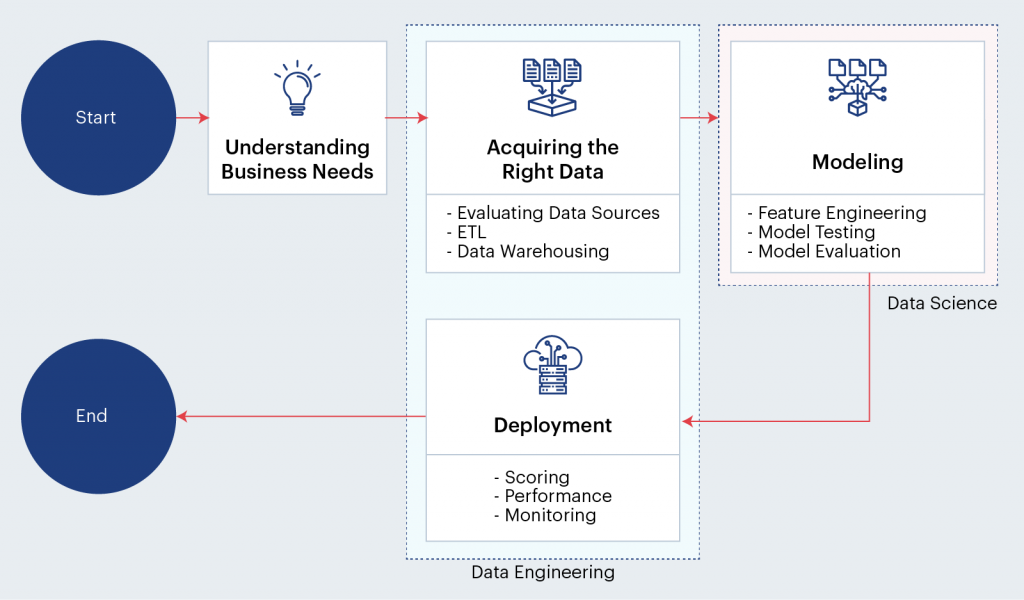
The best way to learn MLOps is to find a combination of methods that works for you. Some people prefer to take courses, while others prefer to read books and articles. Some people prefer to attend conferences and meetups, while others prefer to get involved in open source projects or contribute to MLOps communities. The most important thing is to find a way to learn that is engaging and that helps you retain the information.
Some of the additional tips for learning MLOps:
- Start with the basics: Before you dive into the more advanced topics, make sure you understand the basics of machine learning, DevOps, and cloud computing.
- Find a mentor: A mentor can be an excellent way to learn MLOps. They can provide support and guidance, and they can aid you in troubleshooting problems.
- Be patient: Learning MLOps takes time and effort. Don’t get demotivated if you don’t understand everything right away. Just keep learning and practicing, and you will eventually master the concepts and technologies of MLOps.

👤 About the Author
Ashwani is passionate about DevOps, DevSecOps, SRE, MLOps, and AiOps, with a strong drive to simplify and scale modern IT operations. Through continuous learning and sharing, Ashwani helps organizations and engineers adopt best practices for automation, security, reliability, and AI-driven operations.
🌐 Connect & Follow:
- Website: WizBrand.com
- Facebook: facebook.com/DevOpsSchool
- X (Twitter): x.com/DevOpsSchools
- LinkedIn: linkedin.com/company/devopsschool
- YouTube: youtube.com/@TheDevOpsSchool
- Instagram: instagram.com/devopsschool
- Quora: devopsschool.quora.com
- Email– contact@devopsschool.com

